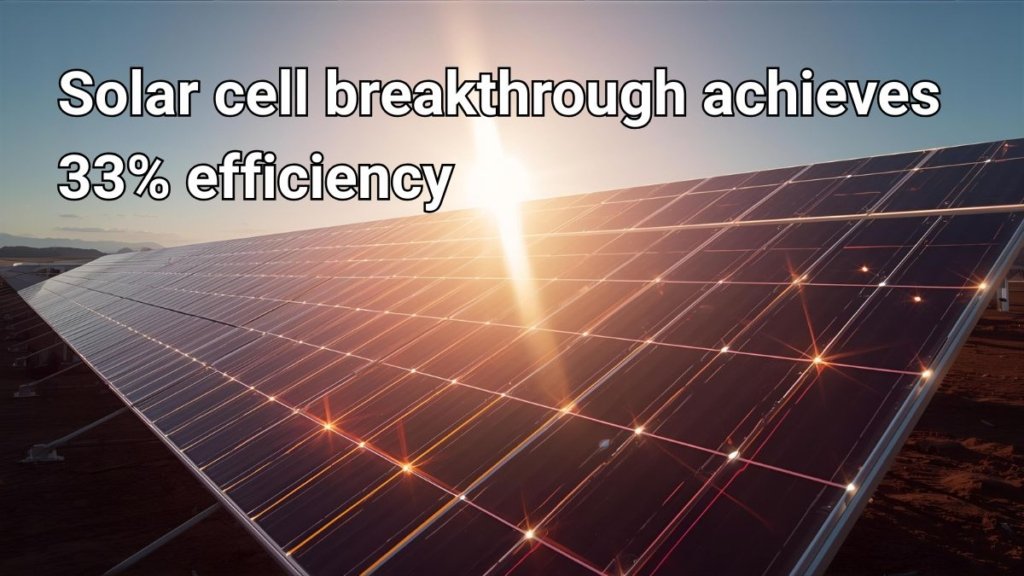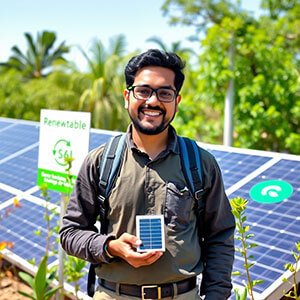For years, the world’s most powerful solar technology had a frustrating secret: it was incompatible with standard industry manufacturing. A groundbreaking new study just changed everything, potentially unlocking a new era of clean energy.
Scientists Just Cracked a Major Barrier to Super-Efficient Solar Panels
A new leap in solar energy tech has stunned the renewable world. Researchers have finally cracked a major barrier that could push solar adoption to the next level. The breakthrough brings us closer to cheaper, more powerful solar panels that may one day redefine how we power homes, cities, and industries.
Solving a Problem That Held Back Solar Progress
For years, the promise of perovskite-silicon tandem solar cells has been clouded by a stubborn issue: scaling lab success to industrial reality. Standard silicon solar panels rely on textured, pyramid-like surfaces to trap light. These structures boost efficiency but make it incredibly hard to deposit smooth, high-quality perovskite layers on top.
That’s why this new study, published September 4, 2025 in Science, matters. A team from KAUST, the University of Freiburg, and Germany’s Fraunhofer Institute figured out a way to passivate textured tandem cells effectively. Their secret? A treatment using 1,3-diaminopropane dihydroiodide, which neutralized defects across the bumpy perovskite surface.

The result: a certified conversion efficiency of 33.1%, with an open-circuit voltage of 2.01 volts, a milestone once thought nearly impossible for textured architectures.
Why This Passivation is Different
Passivation isn’t new in solar technology. Silicon cells have used it for decades to reduce surface defects. But in perovskite cells, scientists discovered something surprising: the treatment doesn’t just affect the surface — it impacts the entire absorber layer.
That means conductivity and fill factor improve across the whole top cell, not just at the edges. As Professor Stefaan De Wolf of KAUST explained, this discovery lays a “solid foundation for all future tandem research.” In practical terms, it makes perovskite tandems more robust, efficient, and manufacturable at scale.
For anyone following solar’s rise, this isn’t just theory; it’s a direct step toward panels that could deliver more power per rooftop, per acre, and per dollar invested.
Latest Solar News:
- Solar Cell Breakthrough Hits 33% Efficiency, Unlocking New Era for Clean Energy
- The Quiet Revolution: Why RVers Are Ditching Generators for This Silent Power Source
- Over 1 Million Anker Power Banks Recalled After Fire Hazards: Here’s What You Should Know
- Top 5 Solar Water Pumps for Garden Irrigation: The Secret to Effortless Eco-Friendly
- The Tiny House Solar Boom: What’s Fueling the Off-Grid Revolution?
The Global Race for Solar Efficiency
This achievement lands in the middle of a white-hot global race for solar supremacy. The theoretical efficiency limit for standard silicon cells (the Shockley-Queisser limit) is 33.7%, a barrier once thought to be ironclad. Tandem cells are blowing right past it.
The competition is fierce and moving at an incredible pace:
- September 2024: Industry giant LONGi makes history, achieving 33.9% efficiency—the first certified cell to officially break the theoretical limit.
- Late 2024: LONGi announces they’ve bested their own record with a 34.2% cell.
- July 2025: LONGi does it again, hitting a stunning 34.85% using novel self-assembled molecules.
Recently, competitor Huasun announced its own 34.02% efficiency record, proving that this isn’t a one-company race.
Other startups and labs worldwide are exploring asymmetric molecules, bilayer passivation, and other novel tweaks that may push efficiencies closer to — or even beyond — theoretical limits.
Every few months, records are falling. The pace feels less like incremental progress and more like a solar space race, with the prize being the technology that could dominate global energy markets.
Read also: How the Rainy Season Impacts Your Solar Panel Efficiency (What Experts Says)?
What This Breakthrough Means for You
While these numbers may sound abstract, the impact is real:
- Cheaper solar installations: Higher efficiency means fewer panels needed for the same output.
- Better ROI for homeowners and businesses: More energy harvested per square foot of roof.
- Faster transition to clean energy: Utility-scale projects could produce far more power with the same land area.
And here’s the kicker: the fact that this study worked on industry-standard textured silicon means commercialization isn’t decades away. This could roll into the solar market much faster than many expected.
Our Opinion
The news of solar cells reaching 33% efficiency isn’t just another record. It’s a sign that the era of next-generation panels is arriving faster than most thought possible.
This rapid-fire succession of world records, often broken just months apart, signals that the technology is maturing at an unprecedented rate. What was once confined to university labs is now on the fast track to commercial reality, promising a future with more powerful, more efficient, and ultimately more accessible clean energy.
The solar revolution isn’t a distant dream—it’s happening right now, and it’s accelerating faster than anyone imagined.
🌞 Yet ultimately, the question isn’t if these panels will transform our energy systems — it’s when.






